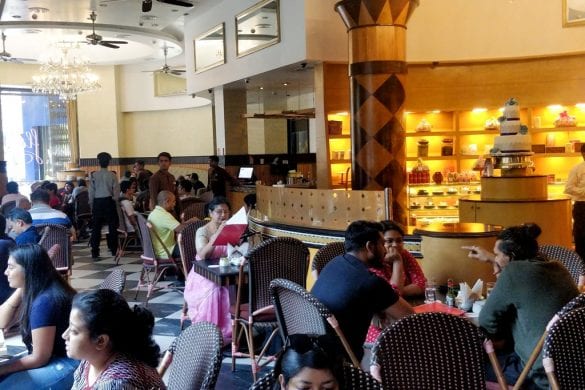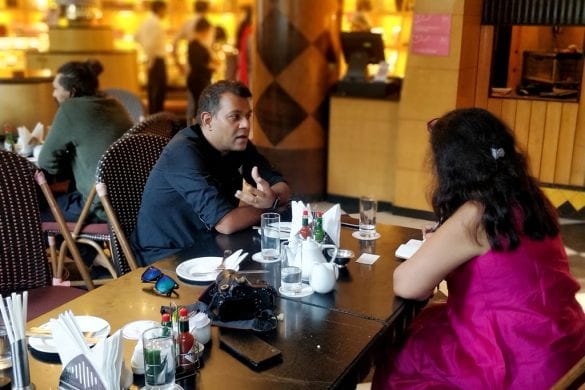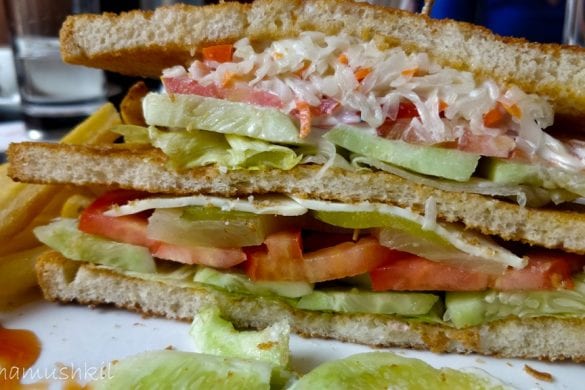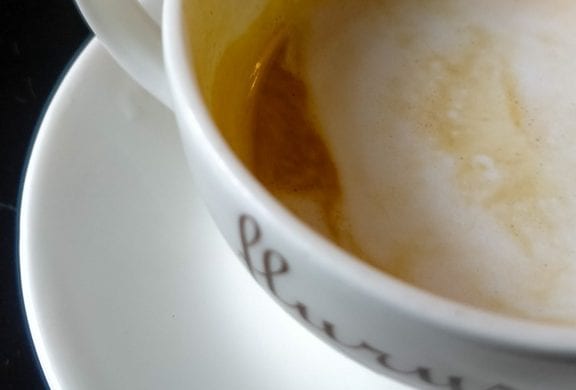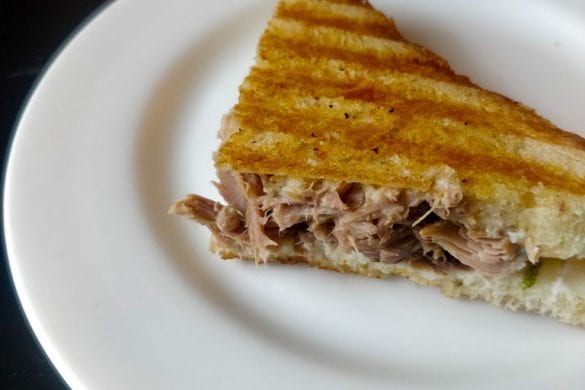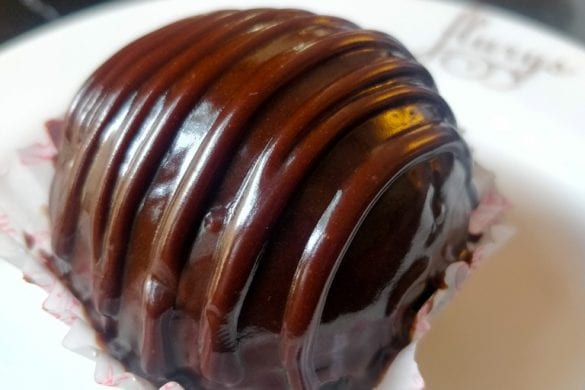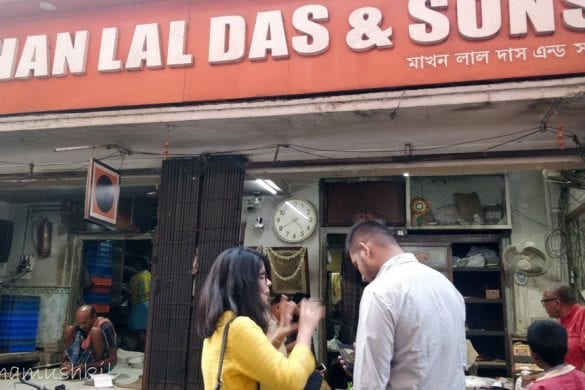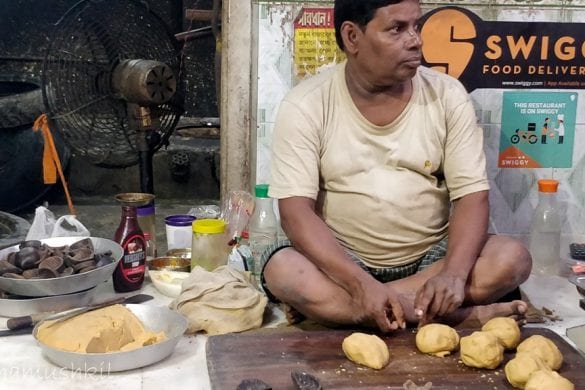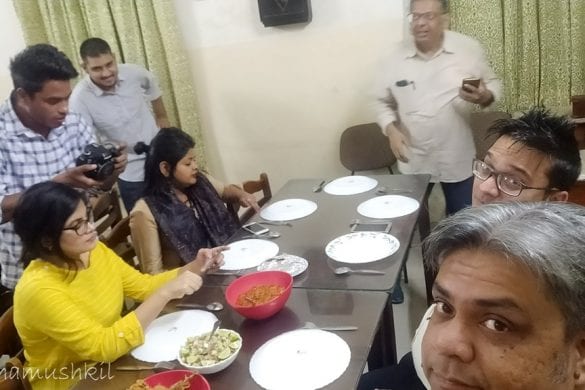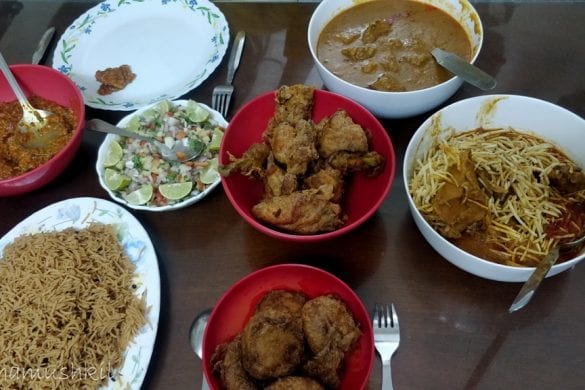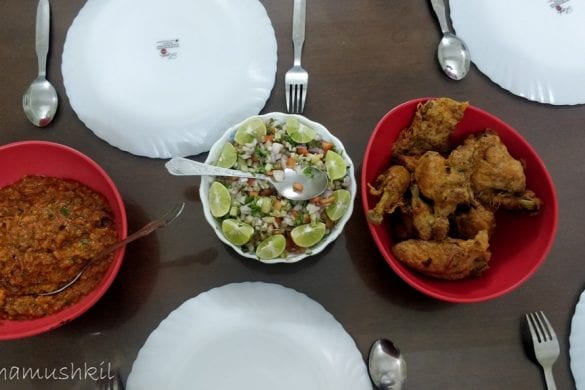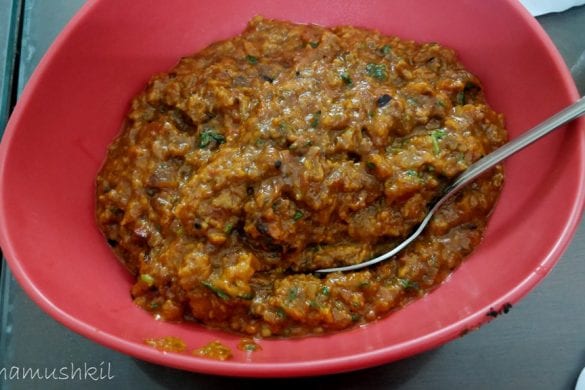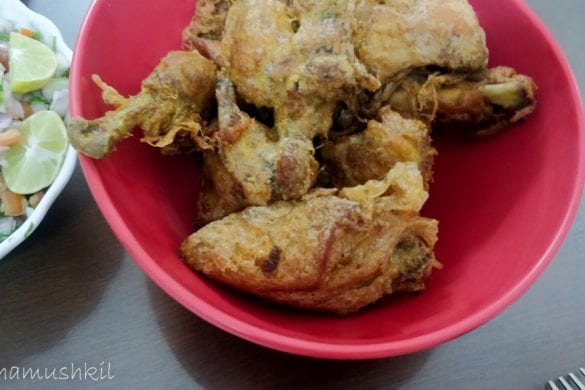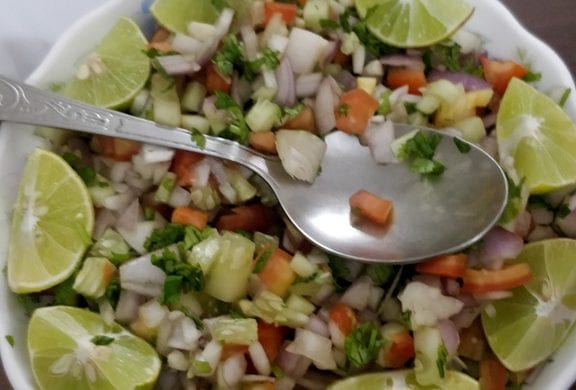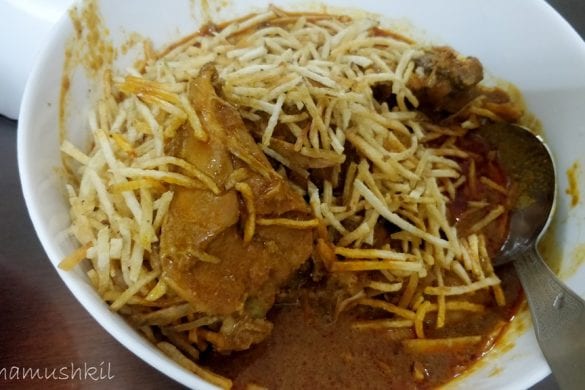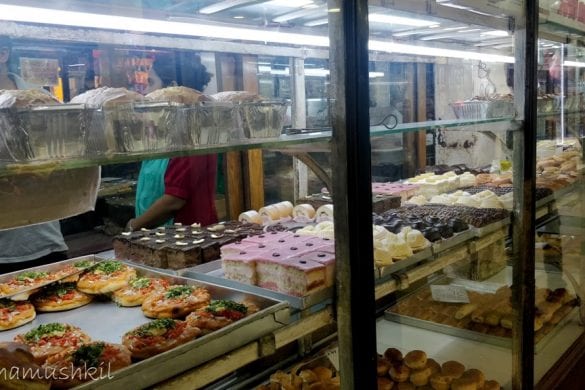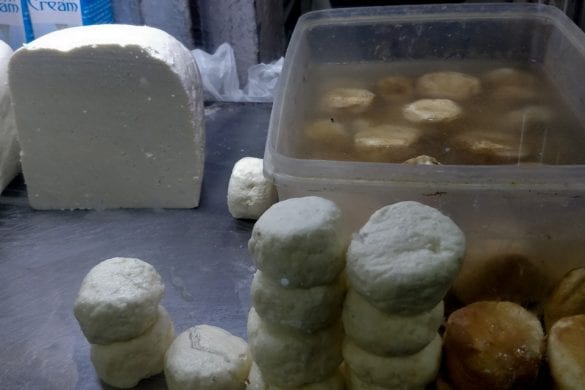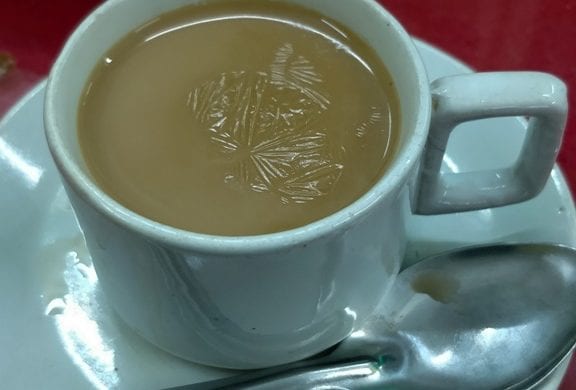Kolkata has always been a melting pot- a confluence of culture. And for a glutton like me, no culture is complete without a mention of food. So, when my 10-year-old son asked me a simple question “you tell me, papa, pizza is Italian, Noodles is Chinese- then who came when ?”, it set me thinking. And this year, Novotel came up with their innovative idea #Novotel20 . The idea was to take a few people for a tour of Kolkata food with an emphasis on the different community food influences and I was asked to lead the wolf pack. And thus started my self-learning.
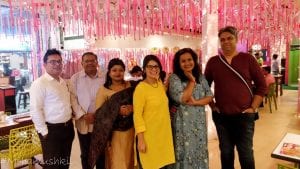
Mughlai chapter
The story probably started in 1203, when Nawab Bakhtiyar Khilji won the battle against king Lakshman Sen and got settled in the now Nabadwip area. Bengal was then, one of the most prosperous areas in India and rice-fish was the staple food. Now being the nawab, he wanted his known food. And thus with the help of his Khansamas and royal cooks, the Mughlai cooking style got blended with the Bengali food habit. Now, the biryani that we see today came much later with the last Nawab Wajid Ali Shah, but the food habits got in much before that. We went to Sabir for a Mughlai breakfast and Royal India Hotel Chitpur for a biryani treat.
Please click on the links above to read more in details
Armenian chapter
Now if I talk on the Armenian influence on Kolkata food, few of you might start treating me as a full nutcase. But trust me, we’ve adopted at least one of their dishes and made it our own. In the year 1697, Armenians first reached Bengal and got settled in the now Srerampore area. In all probabilities, Mr. Jobb Charnock was the one to help them in this relocation. They were great businessmen and got really prosperous doing the trading in Bengal? But, you can ask me now, “Where is the Kolkata food ?”
Well, have you tasted Potoler Dolma – those lovely cute pointed gourds stuffed with fillings- ranging from mutton keema to vegetable stuffing? Armenians had a similar dish – meat wrapped inside grape leaves and steamed named Dolma. Same name- you see? Now, getting hold of a grape leaf was not easy in Bengal and pointed gourd was readily available. And thus one of the most famous dishes of Kolkata food was born- Potoler Dolma.
Greek Chapter
Along with Armenians, came the Greek traders. Now their soft Pita bread or feta cheese didn’t really get its popularity in Bengal. And we probably didn’t adopt their cooking style. So, apart from a few pop-ups and few Mediterranean outlets in large five-star properties, Kolkata food didn’t really acknowledge them.
British chapter
A few years afterward, there was a great battle at a mango orchard and one nawab fled- due to whatever reason. Yes, I am talking about the battle of Plassey. British traders, by then, tasted blood and wanted the throne. We all know the history of the next 200 years. But Kolkata food got hugely influenced by the British, or rather, the European cuisine. Many a thing that we take pride in as Kolkata food, are inherited from the British. Tea drinking habits are definitely one of them and what better place to visit and experience the colonial feel, than Flurys? Even the pride of Kolkata- fish fry is inherited from the British Fish and Chips as they say …
We reserved our tables there beforehand and Chef Vikas Kumar was supportive enough to be free for the interview. The Egg Benedict was surreal with the perfect amount of Hollandaise sauce and eggs from farm-free-chickens. It enhanced the taste of the eggs multiple times. Tuna Sandwich there is my favorite. It’s that old school version with lots of filling without the mayonnaise. Overall, a great breakfast.
Chinese Chapter
During the British chapter, Chinese food came and almost won the battle. In the late 18th century, one broke businessman Mr. Tom Achew landed in, what we know as Icchapur today. And once Governor-general Mr. Warren Hastings granted them land for setting up a sugar factory, the first Chinese settlement in India was born. In fact, the folklore goes like, the word Chinese was converted into the local dialect as china and the product produced by them in that factory was called chini (a.k.a sugar). Few know that before this settlement had settled, there was hardly any documented usage of refined sugar in Bengal sweets. However, the history of Bengali sweets deserves a separate mention and will be dealt with later.
However, It seems Mr. Achew couldn’t run his factory well and it got closed down. Naturally, the workers moved towards the nearest big city- Calcutta. They got themselves settled in the current Tiretta Bazaar area and this was the oldest Chinese ghetto in Kolkata. One of the primary business there, was tannery. Now, tanneries in the midst of the city were probably becoming an eyesore of the British government and the same was shifted beside the eastern wetland. And, thus the new-age Chinatown or Tangra came into existence.
You can read about my experience for Tiretta Bazar breakfast here
And, it’d be interesting to know that though the oldest documented Chinese restaurant was “Nanking”, the oldest operating Chinese restaurant today is Eau Chew in Ganesh Chandra Avenue, running from last 90+ years. And we went there for a wholesome lunch ….. Damn, with the pre-ordered Whole Steamed Vetki and Roasted Chilly Pork, it was a lunch to remember.
Please check my blogpost on Eau Chew here. And it was my first ever Food blogpost
The sweet chapter
By this time in the course of Kolkata history, sugar was introduced and Kolkata got its matter of pride- Sandesh. and how come we go on a food walk without a tribute to the oldest sweet shop in Kolkata? We went to Makhanlal Das in Notun Bazaar Bidhan Sarani. Let me tell you, they have been making sweets from last almost 200 years.
And there’s a typical specialty in this shop. They don’t keep anything ready except a few samplers. As and when a customer goes and orders, sweets (rather Sandesh) is made in front of them, packed and served. This place definitely needs a full-fledged blog post and will be updated soon.
Parsi chapter
Parsis got settled in Kolkata in the late 19th century. Kolkata food didn’t change much with their arrival, but definitely the business scenario did. They were always known as an educated, civilized group people. But the cuisine is, for some reason unknown, very closely guarded and recipes are kept a secret only to the community. As I could find out from my Mumbai stay experience, the food is prepared using the “Khatto-Meetho” philosophy– which means a little sweet and little sour in taste. And in reality, the dishes are neither too spicy, nor too sweet (barring off course, the desserts). Fish and meat are heavily used along with the staple dose of rice and Pao.
Mrs. Meher Hansotia serves probably the most authentic Parsi food in Kolkata. She operates from the Parsee Dharamshala and food needs to be pre-ordered via phone (9831403863)/ in-person-visit. We went there for dinner. dinner needs to be pre-ordered there and let me tell you, the portion size is quite huge. We’ve ordered for the classics Chicken Farcha, Egg akuri, Salli Murg, Mutton Dhansak and Brown Rice. The Lagaan Nu Custard made by the couple is a cult in the city and we had it for dessert. It was a filling dinner.
Please check my blogpost here for more details on Parsi food in Kolkata
Jew chapter
In the year 1798, one Jew gentleman named Mr. Salom Kohen reached Kolkata from Syria, and the Jew community started flourishing here. You’re free to ask me where is the Jew cuisine in Kolkata food … But please allow me to remind you of your own city. Have you been to Kolkata’s iconic bakery- Nahoum’s- tucked inside New Market? Well, ladies and gentlemen, it is probably the oldest operating Jewish bakery in Kolkata. The service is a bit snobbish, but products are still good and value for money. And apart from tasting a few dishes, we packed mostly for our homes …
The crowd during Christmas for their Plum cake and Fruit cake is crazy, but the taste is still good. And if you haven’t been there, go today- trust me- the cheese puff and plum cakes are still worth it. Also, after a few twists and turns, few shops still sell the Bandel Cheese. Now, you need to check my Book Food Kahini to know the story of that. But those moist earthy small cheese balls can pair really well with some Chardonnay on a winter evening.
Afgan chapter
We can not ignore a community, on which Rabindranath Tagore wrote one of his best sellers- the Afghans. They’re still here in the city- less seen but existing like a shadow. In 1840, we can see the first Afgan community near Kolkata and the Afgan Kothi is still there at Titagarh. There used to be a full-fledged Afgan restaurant in Kolkata, but it got shut down for some time. So, the only option for me was to take the guests for a Mughlai breakfast, where the Afgan community meets every morning. And thus Sabir got on the tour. Dal Gosht, hot plump roti and Luver curry paired with a steaming cup of tea … life couldn’t get better.
Marwari and Gujrati chapter
Around the 1950’s, Kolkata had seen the champion traders in Bengal- Marwaris, and Gujratis. Burrabazar is the trading hub of Kolkata and is flocked by thousands of Gujrati and Marwari traders and businessmen, among others. So, the food in Burrabazar is predominantly vegetarian fare (barring probably Royal India Hotel and Zakaria Street/ Colootola area) and more inclined towards some delicious Gujarati and Marwari specialty.
Even today, when we talk of Kachori in Kolkata, those small roundels and the runny potato sabzi gives the Bengali Kochuri a tough competition. due to the shortage of time, we couldn’t visit Burrabazar, but for someone exploring Kolkata food, this is a must-visit place. Needless to say, the national evening food of Kolkattan, chanachur, and Bhujiya were introduced by this community. Though my friend Kaniska da says that it was introduced by the Bihari community, maybe I need to find out more about that.
Punjabi chapter
And thus gradually came the hardworking and ever-smiling Punjabi community. Contrary to the popular belief, Punjabis always were extremely good businessmen and around the 1930s, Sardar Gurcharan Singh started Bullygunge Dhaba. Soon after opening, they understood that Kolkata food will not be satisfied with their Maa Ki daal. Hence, probably to keep the market alive and going, egg Bhujiya was added and Kolkata food got introduced to Tarka. The tampering or Tadka had nothing to do with it, but the dish made Kolkata, happy. But apart from Tarka, I should mention that in 1898, Punjab sherbet House was started by Mr. Ralli Singh Arora, which still exists with the brand Ralli’s Sherbet. Even chicken Bharta was introduced to please Kolkata palate with shredded (leftover ??? ) chicken and it was an instant hit.
Tamil chapter
Kolkata food is discussed and Dosa is left behind- absolutely unimaginable. Tamil people started settling in Kolkata in the early twentieth century. In 1941, Tamil Sangha got formed and a whole community of Tamils (popularly known as South Indians) got started in South Kolkata around Lake Market area. Ramkrishna Lunch Hone in 1955, Prema Vilas in 1960 and Raj Hotel in 1961- all are the old South Indian eateries serving some superb Dosas and Idlis and are still going strong.
Udipi Home- An Authentic South-Indian Joint in South Kolkata
Tibetan and Nepali chapter
But if we need to talk of one item which just came, saw and conquered- it’s probably the momo- the blue-eyed boy of Kolkata street food. People from hills- Kalimpong used to come here and got themselves settled with the trading of wool, woolen wear and other businesses. But what Kolkata adopted from them, is the food items Momo and Thukpa. And we must salute that spirit.
Malaysia or Burmese connection
And it’s legitimate on your part to ask why this segment is here and how is it relevant? The simple reason is, I love my Chingri Malai curry. The use of grated Coconut and coconut milk was greatly influenced by the South East Asian countries. So, whether Malai curry is named after Malay (from Malaysia) or from Mandalay (Burma) is a matter of debate and beyond my knowledge. But what I can promise is, I’ll update this post once I find some reference on this …
And my confession …
I know this has been a long post and during the process, the flow might have got lost. And let me be honest, I am not a very good History student. So, if you find any factual mistake, please let me know in the comment section. Kolkata has always been about mutual growth and supporting each other. Multiple communities have some in and enriched Kolkata food. This is a brief journey and we’ll try to update it in time to come.
I must thank Novotel Hotels Kolkata for coming up with the idea
Bon apetit !!!
I can be reached at indrajit.lahiri@ymail.com


